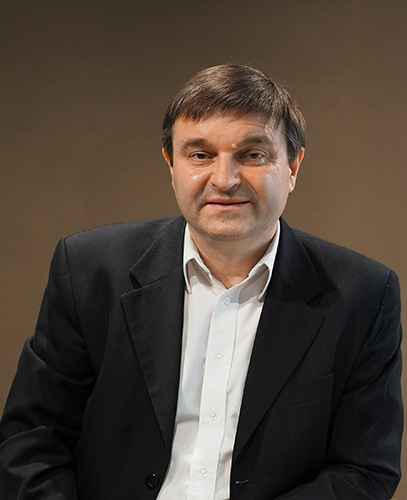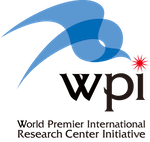From the Director
Everything, ourselves included, is made of molecules and atoms, which are made of electrons, protons & neutrons, which are made of quarks and leptons… Researchers have revealed smaller and smaller building blocks of matter, classified them, and detected their “fingerprint” signals coming from far riches of the Universe and its history. With each breakthrough, we touched “the depths of nature with bare hands,” though we have been playing by nature’s rules all along, uncovering just tiny fragments of its vast unknown. The words of the great physicist Richard Feynman, “What I cannot create, I do not understand,” resonate with my vision to develop new building blocks of matter, analogs of nature’s quarks, protons, atoms & molecules, which would boost our understanding of nature’s inner workings and allow for making new forms of matter by design.

This research motto has parallels with the Japanese artform of Mizuhiki. Within this artform, many beautiful things can be made from a humble building block, the rice paper cord. What nature did not give us, we can make by knotting and knitting physical fields, molecules and colloids. A Mizuhiki artist’s hand can create almost anything. In our designs of building blocks of matter, “knot chirality” can play the role of the artist’s hand by stabilizing knots in physical fields and polymer strands. Learning and mastering such nature-inspired skills can endow us with the abilities to create new materials, cure diseases, & understand nature’s inner workings.
Differing from simpler disciplinary definitions of chirality, like in chemistry, this knot chirality requires dealing with a hierarchy of length and time scales & creation of entirely new concepts, laws & generalizations, which is only possible within a research effort uninhibited by disciplinary boundaries. Therefore, we are establishing an entire research paradigm of knotted chiral meta matter (KCM2), with knots in fields as building blocks, which is not a branch of math, physics, chemistry, biology, material science, or engineering but rather is an intrinsically interdisciplinary mixture of these, a pursuit in which progress is made simultaneously in the context of all these fields. WPI-SKCM2 holistically explores the role of knot chirality at subatomic-to-cosmic scales, with a focus on fundamental tabletop research. Mathematical concepts, like the ones of knot and homotopy theories, aid us with the generalization of findings. While we focus on systems like liquid crystals, colloids, magnets and (bio)polymers, our findings provide insights into related phenomena in experimentally less accessible systems, like black holes, elementary particles & origins of life in the pre-biotic world. Conversely, theories of subatomic physics and cosmology inspire us to deepen our understanding of related phenomena in these highly accessible condensed matter systems.
While KCM2 science has many potential avenues of exploration, WPI-SKCM2 focuses our fundamental science towards enabling technologies that aid in solving the world’s most challenging problems. For example, we are working to create porous thermally super-insulating materials with interknitted molecules & designable reflectivity. This may help address climate change by reducing energy demand if these materials are used in buildings, which are currently cumulatively responsible for 40% of all generated energy. From the biomedical standpoint, mis-knotting in proteins can cause diseases, such as Alzheimer’s, so the control of these processes may aid in treating diseases.
Knowledge traditionally took decades to “diffuse” across disciplines. We reduce this time 100-fold by removing disciplinary boundaries. The dream of establishing a new interdisciplinary field of science brings together our team of PIs. We hope to continue to attract many outstanding international researchers and talented post-docs and students, and WPI-SKCM2 annual meetings and sponsored exchanges help to bring together the top minds related to KCM2. Moreover, WPI-SKCM2 PhD training develops a community of graduate researchers built around activities designed to broaden their educational base, foster scientific growth, and expand global perspectives. By team-teaching courses and drawing students from different preparation backgrounds, WPI-SKCM2 is a focal point for interdisciplinary training, enabling students to learn by performing projects in a collaborative environment.
Furthermore, WPI-SKCM2 is a testbed for research-based education reforms within and beyond Japan. Particularly, we have a strong commitment to reforms that improve diversity, support for young researchers, and administration. There is a strong intention to introduce changes in Japan, but the process is slow. The WPI program allows for the flexibility to make reforms profoundly and expeditiously, and we are adopting the best practices of US and UK PhD programs while customizing them to Japan. The support from HU and President Ochi has been amazing.
The Oleander flower, a beautiful chiral object, is a symbol of the rebirth of Hiroshima and a symbol of our passion for WPI-SKCM2 and the paradigm of KCM2 – It will blossom!


